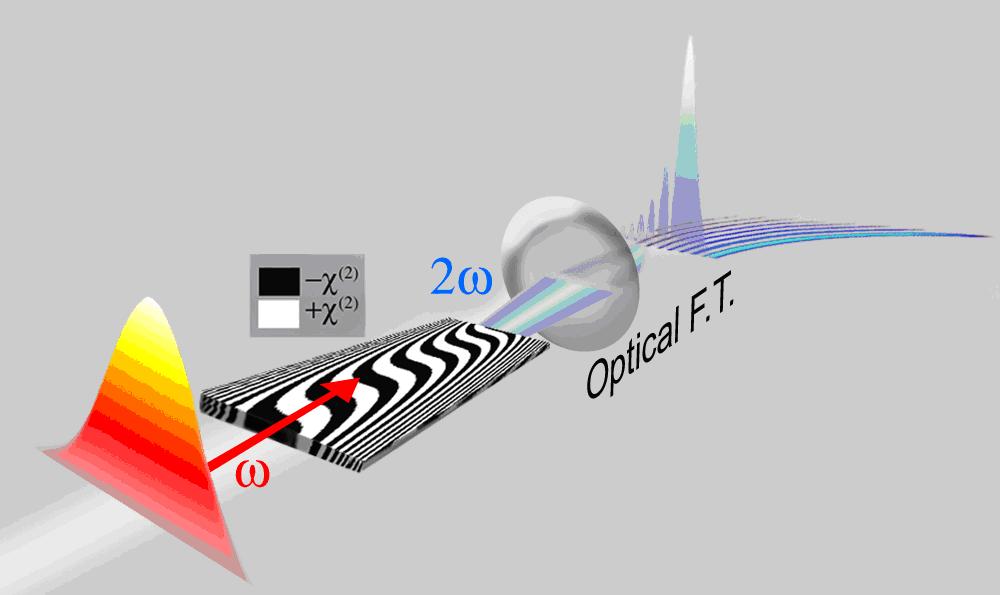The method revealed by researchers at Tel Aviv University in Nature Photonics makes it possible to produce accelerating beams at new frequencies as well as to control their properties such as the rate of acceleration or the intensity of the beam

In the work published in the last issue of Nature Photonics, a group of researchers from the Department of Physical Electronics at Tel Aviv University (doctoral students Tal Allenbogan, Noa Wallach-Bloch, Ayelet Ganni Pedowitz and Prof. Adi Aryeh) reported on the development of a new method for creating accelerating Airy beams and controlling them using light. The method is based on a non-linear conversion* of the light using a special non-linear photonic crystal that was designed and manufactured for this purpose. Different regions of the crystal react differently to the incident beam, so the result obtained from normal beam irradiation creates an accelerating Airy beam. The method makes it possible to produce accelerating beams at new frequencies as well as to control their properties such as the rate of acceleration or the intensity of the beam, in a purely optical way by changing the properties of another light beam. A scheme of the experiment is shown in Fig.
It is common to assume that light beams move through the air in straight lines. However, in 2007, scientists from the University of Central Florida showed that there is a beam whose peak intensity moves in a parabolic trajectory, similar to the ballistic movement of a horizontally thrown object. This beam is called an accelerating Airy beam, in analogy to the acceleration of the object being pulled to the ground. The Airy function that describes the intensity distribution of the beam is a function with an infinite number of lobes that fade as you move away from the primary. The first lobe defines the peak intensity of the beam.
Recently, a study was published showing the use of Airy Beams in order to control and direct nanometric particles in curved paths. This control is made possible by the radiation pressure of the light, which captures the particle and forces it to move along the path of the beam. The ability to force small particles to move in curved paths and control them opens the door to new applications in biology. In another study, recently published in the prestigious journal Science, scientists from the USA showed that an extremely powerful Airy beam can be used to ionize the air and create a conductive plasma channel moving in a curved path. By properly directing such channels into lightning clouds it will be possible to discharge them in a controlled and safe manner before they randomly break up, thus preventing lightning storm damage.
* Shining strong light on certain materials at one frequency results in the creation of light at another frequency. As an example, illuminating the material with red light can result in the creation of blue light emitted from the material.

3 תגובות
Eyal:
This is a special solution of the wave equation that progresses in a characteristic way with a parabolic trajectory instead of a straight line and is therefore called an accelerator. Read what is written in the following link:
http://focus.aps.org/story/v20/st19
Eyal:
It's not exactly that, but it might help:
http://authors.library.caltech.edu/11816/1/DAVoe08.pdf
If someone can give a factual and more detailed explanation of this concept (Airy beam? Accelerates??) that would be nice. This is the first time I have heard this term.
Is it simply a different interpretation of the progress of light under certain conditions?